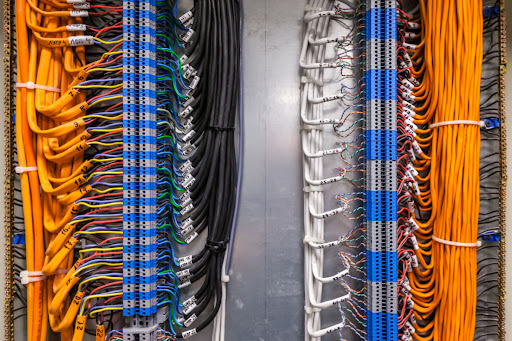In the world of business, particularly in the hospitality industry, the importance of a reliable, efficient, and cost-effective low voltage cabling system cannot be overstated. Whether you’re dealing with multi-facility data centers, commercial buildings, or small business settings, the choice of your cabling and wiring system is a critical variable that could influence your overall operational efficiency, energy costs, and even security.
How Low Voltage Cabling Works
At its core, low voltage cabling, also known as structured cabling, involves the use of low voltage wires and cables to transmit data and power multiple devices. Unlike high voltage wiring and standard electrical wiring that primarily transmit electrical power, low voltage systems are designed to accommodate a range of functions such as transmitting audio, video, and data signals, powering devices like VoIP phones, security cameras, and access control systems.
Low voltage wiring systems are typically made up of various components including ethernet cables, fiber optic cables, coaxial cables, and copper cables. These are connected to network switches, patch panels, and other network devices in a central location, often a server room. The type of cable used can vary depending on the specific needs of the business, with each cable type designed to accommodate varying capacities of data transmission while minimizing electromagnetic interference.
The Benefits of Professional Low Voltage Wiring Installation for Businesses
Investing in a professional low voltage system installation, like those offered through my business, not only ensures a reliable and efficient system but also provides a number of key benefits. Here are a few:
- Data Cabling Efficiency: With low voltage systems, data cabling becomes more efficient. Whether it’s transmitting HD video signals from video cameras, audio from audio systems, or data from computer networks, these systems ensure fast and reliable transmission.
- Security Systems: Low voltage wiring is crucial for operating security equipment such as security cameras, access control systems, and alarm systems. This means better security for your business premises.
- Cost-Effective: Compared to high voltage cables and systems, low voltage options can significantly reduce energy costs. They require less electricity to operate and are safer to install and maintain.
- Scalability: As your business grows, so too can your low voltage system. It’s easy to add new devices or expand the system.
Sean Edwards: Premier Low Voltage Cabling Services
I specialize in providing top-tier, professional low voltage cabling services and I’m ready to help you design and install a system that meets your specific business needs.
From structured wiring to fiber optic cabling, and access control systems, my team provides comprehensive solutions for businesses of all sizes. We understand the unique needs of the hospitality industry and are equipped to deliver low voltage cabling solutions that enhance efficiency, improve security, and ultimately, drive business success.
Intrigued by the potential benefits of a low voltage wiring system for your business? Eager to explore how our services can be tailored to meet your specific needs? Don’t wait. Contact my team today, and let’s start building a more connected, efficient, and secure future for your business.
FAQs
What is low voltage cabling?
Low voltage cabling is a specialized form of wiring system that transmits data and power to multiple devices. Unlike high voltage wiring which primarily transmits electrical power, low voltage cabling is designed to handle a range of functions such as transmitting audio, video, and data signals. It’s widely used in various applications including security systems, computer networks, audio and video systems, and telephone systems.
How do you handle low voltage wires?
Handling low voltage wires involves a few important steps. First, it’s crucial to turn off the power to avoid any potential safety risks. You should then identify and mark the cables before starting any work. When installing or adjusting the wires or cables, ensure they are not excessively bent, twisted, or pulled as this could damage them and affect performance. Additionally, always use the appropriate tools and follow the manufacturer’s instructions. Lastly, always test your cables after installation to confirm they are functioning correctly.
What do you need to know about low-voltage wiring?
When it comes to low voltage wiring, there are several key things to keep in mind.
- First, understanding the different types of cables can help you choose the right one for your specific needs.
- Second, knowing how to properly handle and install these cables is crucial for ensuring optimal performance and safety.
- Third, considering the layout of your building and the specific requirements of your systems can help you design a more efficient and effective system.
- Lastly, remember that professional installation can often provide the best results, ensuring your system is reliable, efficient, and capable of meeting your business’s unique needs.





